#Help Guide!
Explore tagged Tumblr posts
Text

Beginner's Guide to SMAUs
How Reign makes SMAUs!
༯ I use my own text messages. By this I mean, I text my own number and it'll send back to me my messages, then I hold one text to click the option of editing the conversation by tapping 'More' so I can delete repeat messages and come out with a final product like so:



༯ Other creators have their preferred platform or app, unfortunately I am not familiar with them so I can't advise you on how to use those. Your best bet will be asking a creator you like for a recommendation and for a tutorial
༯ I also crop the pictures to remove the time stamp and battery percentage at the top and the bottom line toggle to minimise distractions
How to make convincing conversations!
༯ This is something I see some creators struggle with, and indeed, I struggle too from time to time. You need to remember that this isn't like writing full fics -- you have to write like the characters are actually texting. Sometimes people write as if the characters are conversing face to face but it's just formatted via text messages, which can take away from the immersion
༯ One question to ask yourself: would the character be having this conversation on text?
༯ Sometimes a creator sets the scene out as if the characters are in close proximity so it doesn't make sense that they'd be texting when they could just talk to each other
༯ To avoid this error, you could do two things.
1. Don't write about scenarios that can't happen on text. 2. Write something in to make it seem like they have a reason to text as shown below:


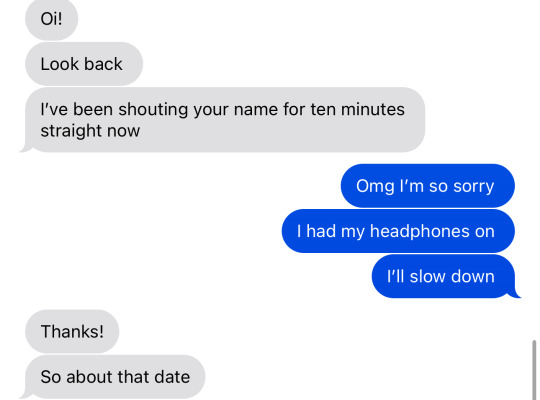
༯ You should also be talking the way one would on text. Sometimes it can be revealing for character exploration if a character abbreviates a lot, or uses emojis often (Inumaki), or maybe is very formal (like Nanami) so explore your preferences
༯ Definitely don't text like you're in a telenovela. It's unrealistic.
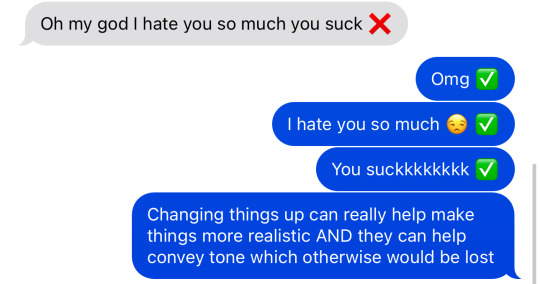

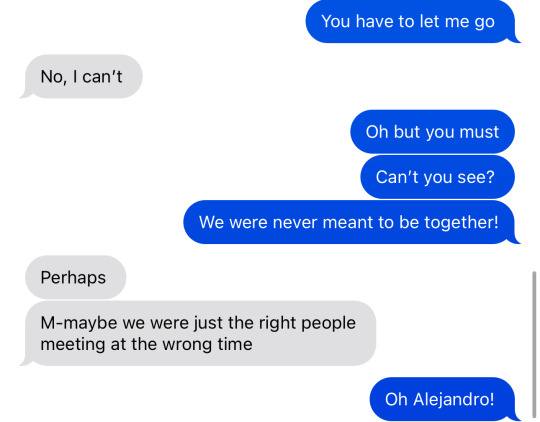
Other Do's!
༯ Do be consistent -- try to stick to a set layout. Since starting my smau writing journey, I've decided that all characters will either have one pic conversations, or two, or three and so on. Apart from my old smaus, you'll no longer find inconsistencies where Gojo has two messages, most other characters have one but then Sukuna gets three.
༯ Do minimise typos -- they can really take someone out of the immersion. Typos happen often, they really can't be helped sometimes so they're not this big, terrible, shameful thing. If they happen and you spot them and you can afford to fix it, then do so. My rule of thumb is, if the typo is egregious or makes the conversation suddenly confusing, then I'll change it. If they're tiny, then I don't.
༯ Typos can also be utilised -- I like to use typos to show that a character is in an out-of-the-ordinary state like, they're drunk or they're panicking, they're crying etc. This is another reason why typos should be minimised. So that when they are in your conversations, your followers will know that it serves a purpose and it isn't a messy thing you missed
༯ Do get rid of the Read stamp -- they aren't a big deal either. But I always add an extra message at the end so that the blue message isn't pushed up. It's hard being able to fit everything you want to fit into one screenshot so utilising all the space possible is very important. Let me show you what I mean:

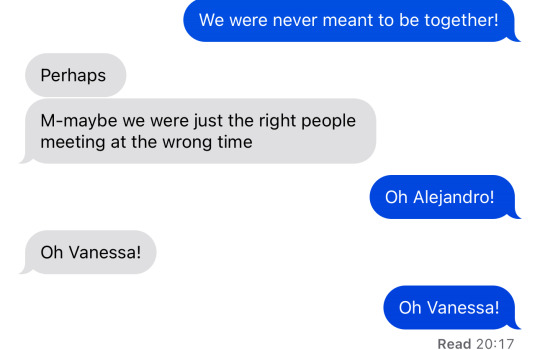
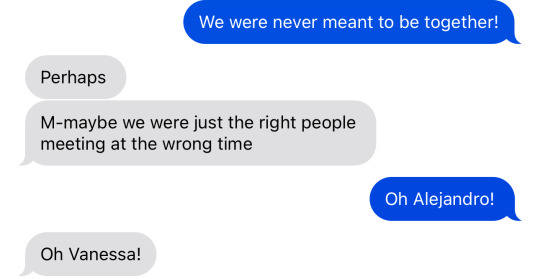
This also makes things cleaner AND you can maintain the illusion of whatever time of day the conversation is happening. You don't want to be texting like it's at night but then the time stamp reveals it's actually 11am for you.
༯ Do utilise the reactions -- I use the reactions for a couple different reasons
1. To fill up space 2. To make sense of the conversation when I've had to delete a text to make room for everything important I want said 3. To highlight a lighthearted tone
༯ You do just have to take a pic before the grey copy pops up or if you want the grey person to react, then delete the blue reaction once the grey one has appeared. You'll know what I mean if you try it out yourself.
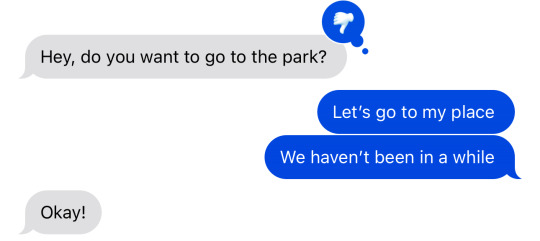


Now the Don't's!
༯ Don't use too many abbreviations -- they can be hard to understand for many people, for example, people whose first language isn't English (or whatever language the smau is in)
༯ Don't cut off messages mid sentence just because you don't have enough space -- it might be a little messy but of course, if you must, that's not a big problem, just make sure it's still easily read
༯ Don't just have one or two messages for the next pic -- if you need to use two or more pics to continue the conversation, then make sure it's two pics worth of texts and not just one single message. Again, utilise the space available
༯ Don't feel pressured to use real pictures -- simply saying [Sent 1 image] is enough and pictures take up a lot of space
༯ Don't send emojis on their own -- they come out large and then you're just wasting space
༯ Don't use the app when uploading more than 10 pics -- the app doesn't let you but the website allows up to 30
༯ Don't make each row one pic -- it makes your post annoyingly long. You should instead put three each unless you're trying to indicate that there's only 1 or 2 pics per character
How to tag!
༯ When you begin, it's best if you have all the tags you could possibly need already listed in your notes app or something so you can just copy and paste instead of writing it up again and again
༯ Or just copy a creator's tags (minus any personal ones they use ofc)
༯ Be sure to tag correctly though -- if something is purely smut, don't tag it fluff. Many people like to read only fluff because they don't want to read 18+ works so be respectful of that...remember minors are around us
༯ Also do not tag characters who aren't in your story for the sake of maximising notes -- it's annoying and you'll inevitably have someone complain lol
Most importantly: have fun!
༯ These are just my advice and how I do things
༯ There's no right or wrong way to write smaus so don't let anyone tell you otherwise.
༯ Have fun and don't take it too seriously

204 notes
·
View notes
Text
Tips for writing those gala scenes, from someone who goes to them occasionally:
Generally you unbutton and re-button a suit coat when you sit down and stand up.
You’re supposed to hold wine or champagne glasses by the stem to avoid warming up the liquid inside. A character out of their depth might hold the glass around the sides instead.
When rich/important people forget your name and they’re drunk, they usually just tell you that they don’t remember or completely skip over any opportunity to use your name so they don’t look silly.
A good way to indicate you don’t want to shake someone’s hand at an event is to hold a drink in your right hand (and if you’re a woman, a purse in the other so you definitely can’t shift the glass to another hand and then shake)
Americans who still kiss cheeks as a welcome generally don’t press lips to cheeks, it’s more of a touch of cheek to cheek or even a hover (these days, mostly to avoid smudging a woman’s makeup)
The distinctions between dress codes (black tie, cocktail, etc) are very intricate but obvious to those who know how to look. If you wear a short skirt to a black tie event for example, people would clock that instantly even if the dress itself was very formal. Same thing goes for certain articles of men’s clothing.
Open bars / cash bars at events usually carry limited options. They’re meant to serve lots of people very quickly, so nobody is getting a cosmo or a Manhattan etc.
Members of the press generally aren’t allowed to freely circulate at nicer galas/events without a very good reason. When they do, they need to identify themselves before talking with someone.
#late night thoughts#are these helpful at all?#obv these aren’t applicable to every gala scene#galas#writing tips#writing guide#these don’t apply as much in Gotham obvs#but that’s because it’s Gotham
92K notes
·
View notes
Text
Other Words for "Look" + With meanings | List for writers
Many people create lists of synonyms for the word 'said,' but what about the word 'look'? Here are some synonyms that I enjoy using in my writing, along with their meanings for your reference. While all these words relate to 'look,' they each carry distinct meanings and nuances, so I thought it would be helpful to provide meanings for each one.
Gaze - To look steadily and intently, especially in admiration or thought.
Glance - A brief or hurried look.
Peek - A quick and typically secretive look.
Peer - To look with difficulty or concentration.
Scan - To look over quickly but thoroughly.
Observe - To watch carefully and attentively.
Inspect - To look at closely in order to assess condition or quality.
Stare - To look fixedly or vacantly at someone or something.
Glimpse - To see or perceive briefly or partially.
Eye - To look or stare at intently.
Peruse - To read or examine something with great care.
Scrutinize - To examine or inspect closely and thoroughly.
Behold - To see or observe a thing or person, especially a remarkable one.
Witness - To see something happen, typically a significant event.
Spot - To see, notice, or recognize someone or something.
Contemplate - To look thoughtfully for a long time at.
Sight - To suddenly or unexpectedly see something or someone.
Ogle - To stare at in a lecherous manner.
Leer - To look or gaze in an unpleasant, malicious way.
Gawk - To stare openly and stupidly.
Gape - To stare with one's mouth open wide, in amazement.
Squint - To look with eyes partially closed.
Regard - To consider or think of in a specified way.
Admire - To regard with pleasure, wonder, and approval.
Skim - To look through quickly to gain superficial knowledge.
Reconnoiter - To make a military observation of a region.
Flick - To look or move the eyes quickly.
Rake - To look through something rapidly and unsystematically.
Glare - To look angrily or fiercely.
Peep - To look quickly and secretly through an opening.
Focus - To concentrate one's visual effort on.
Discover - To find or realize something not clear before.
Spot-check - To examine something briefly or at random.
Devour - To look over with eager enthusiasm.
Examine - To inspect in detail to determine condition.
Feast one's eyes - To look at something with great enjoyment.
Catch sight of - To suddenly or unexpectedly see.
Clap eyes on - To suddenly see someone or something.
Set eyes on - To look at, especially for the first time.
Take a dekko - Colloquial for taking a look.
Leer at - To look or gaze in a suggestive manner.
Rubberneck - To stare at something in a foolish way.
Make out - To manage to see or read with difficulty.
Lay eyes on - To see or look at.
Pore over - To look at or read something intently.
Ogle at - To look at in a lecherous or predatory way.
Pry - To look or inquire into something in a determined manner.
Dart - To look quickly or furtively.
Drink in - To look at with great enjoyment or fascination.
Bask in - To look at or enjoy something for a period of time.
#on writing#creative writing#writing#writing tips#writers block#how to write#thewriteadviceforwriters#writeblr#writers and poets#writers on tumblr#novel writing#fiction writing#romance writing#writing advice#writing blog#writing characters#writing community#writing help#writing ideas#writing inspiration#writing guide#writing prompts#writing a book#writing resources#writing reference#writing tips and tricks#writers#writing tools#writing life#writing software
16K notes
·
View notes
Text
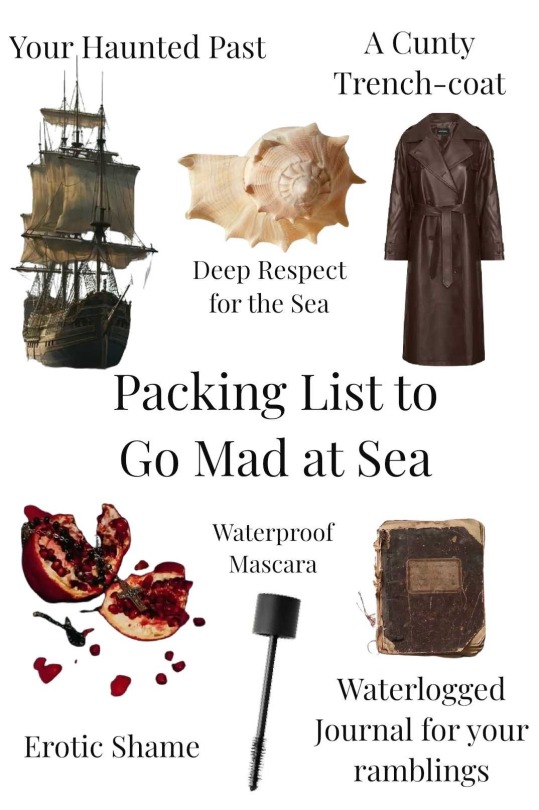
Going Mad at Sea: A Packing List.
Are you planning on a nautical severance from your sanity? Here are some things to consider packing along!
#nautical#madness#going mad#pirates#piratecore#captain#guide#helpful guide#niche guide#alternative lives
16K notes
·
View notes
Text

[from twitter]
#otherkin#alterhuman#wolf therian#otherhearted#otherkith#therian community#therian help#wolfkin#coyote therian#nonhuman#coyote theriotype#coyote kin#coyotekin#therian care guide#canine therian#caninekin
8K notes
·
View notes
Text

btw. i made this quick guide of some of the natural size and proportion reference points in the human body. of course this all varies even irl, and you can stylize however you want, so ymmv but thought it might be helpful for some folks.
#you can also see a bit of how i sketch the shapes of the torso. little bonus ig lmao#again. this is not a 'you have to do this' guide this is just 'here's smth that helps me so maybe it'll help yall too'#tips#i think that's my tag for this stuff? idr
10K notes
·
View notes
Text
Developing Backstory: Bringing Characters to Life

1. Where It All Started: The Character’s Origin
Place of Birth: Where did your character first see the world? Think about the impact of this place—was it a busy city where they had to fight for attention or a quiet village where everyone knew everyone’s business? This location doesn’t just say where they’re from; it shapes how they see the world.
Family and Upbringing: What was their family like? Were their parents loving or distant? Maybe they were raised by someone other than their parents—a mentor, an older sibling, or even alone. Family (or the lack of it) is usually one of the most significant factors in shaping who someone becomes.
Society’s Expectations: What was expected of them when they were young? Possibly, they were born into wealth, with all the pressure to continue the family legacy, or maybe they were raised to be invisible in a world where survival mattered. How does this influence who they are now? Do they accept or reject those expectations?

2. Childhood Events That Left a Mark
First Taste of Conflict: Think about the first time the character realized the world wasn’t a perfect place. Maybe they witnessed violence or faced betrayal. What was that moment, and how did it stick with them? This moment usually lays the foundation for the character’s emotional landscape—fear, hope, ambition, or distrust all come from these early life lessons.
Childhood Dreams: When they were young, what did they want to be? Every child has dreams—did they want to be a knight, a scholar, or even just someone who could travel the world? Did they have to give up these dreams? How does that lost dream shape them now?
Formative Relationships: Who was their first best friend, mentor, or enemy? Childhood friendships and relationships often create deep bonds or wounds that last into adulthood. Did they have a mentor who taught them everything, only to betray them? Did they lose a childhood friend that still haunts them?

3. The Teen Years: Where They Start to Become Who They Are
Trials and Tribulations: What’s the biggest challenge they faced as they grew up? Was it losing a loved one, failing at something important, or maybe being forced into a role they didn’t want? These teenage years are where the emotional armor starts forming—how did the difficulties they faced shape them into the person they are now?
Education or Training: How did they learn what they know? Were they formally trained by an institution, learning everything by the book, or did they learn through experience, like a street-smart survivalist? What impact does their education or lack of it have on how they interact with others?
Teenage Bonds: Did they have a first love or a first major falling out with someone close to them? These experiences often create emotional scars or connections that they carry with them into adulthood. How does that past friendship or romance influence their behavior now?

4. Key Life Events: The Big Moments That Define Them
Trauma or Loss: Was there a moment that changed everything? Think about a significant loss—maybe a loved one, their home, or a sense of identity. How does this event affect their worldview? Do they build walls around themselves or dive into relationships with reckless abandon because they fear losing more?
Victory or Failure: Did they experience a moment of triumph or devastating defeat? Success and failure leave their marks. Were they celebrated as a hero once, leading them to overconfidence, or did they fail when everyone was counting on them, leading to crippling self-doubt?
Betrayal: Was there a betrayal that shaped their adult relationships? Whether it is a friend, family member, or lover, betrayal often changes how we trust others. Do they close themselves off, constantly expecting betrayal, or try to rebuild trust, afraid of being left alone again.

5. Where They Stand Now: The Present Moment
What Drives Them Today: What’s the one thing pushing them forward now? Is it revenge, the need to restore their family’s honor, or maybe even just survival? Whatever it is, this motivation should tie directly back to their experiences.
Emotional Baggage: What unresolved emotional wounds are they carrying? Everyone has scars from their past—some are visible, others not so much. How do these emotional wounds affect how they treat others, how they react to conflict, and how they move through the world.
Current Relationships: Who’s still in their life from their past, and how do they feel about it? Did they reconnect with someone they thought they’d lost, or are they haunted by unresolved issues with people from their past? Do they have any ongoing tensions or regrets tied to these people?

6. Tying Themes to Their Backstory
Cultural or Mythological Influence: How does their personal story tie into the larger world’s mythology or culture? Do they carry a family legacy, a curse, or a prophecy that hangs over them? How does this influence their interactions with others and their perception of themselves?
Recurring Symbols: Are there objects, dreams, or people that keep showing up in their life, symbolizing their journey? Perhaps a recurring nightmare haunts them, or they carry an object from their past that’s both a source of comfort and pain

7. Character Arc: The Journey from Past to Present
How Does Their Past Shape Their Growth?: Every character has emotional baggage that needs resolving. How does their backstory drive their arc? Do they need to forgive themselves, let go of the past, or accept who they’ve become to move forward?
Unanswered Questions from the Past: Are there any mysteries in their backstory they need to solve? Maybe they’re unaware of their true parentage, or maybe there’s a forgotten event from their childhood that will resurface and change everything.
#writerscommunity#character backstory guide#writer community#writerscorner#creative writers#writeblr#writerblr#writers on tumblr#writers#free resources#tips and tricks#writing advice#fantasy writing#fiction writing#tumblr writing community#writing a book#writing#writing guide#story writing#writing help#writing resources#writing stuff
6K notes
·
View notes
Text
Creating Emotionally Devastating Scenes.
Crafting a scene that earns the total sympathy of your readers can be challenging, but it's not impossible. Most emotionally devastating scenes fail at two things, but when these are done right, the results can be powerful.
⚪ The Important Concepts for Writing an Emotionally Devastating Scene
1. The Build-Up,
2. Breaking the Dam.
Before I explain these concepts, let me share a case study.
⚫ Case Study
I wrote a story about a young orphan named Jackie and her younger brother. Their village was burned down, leaving them as the only survivors.
For the next few chapters, readers followed their painful journey and their struggle to survive. The younger brother had a heart problem, and Jackie vowed to become a cardiologist to save him.
She was very ambitious about it, but at the time, it was very ironic. Later in the story, when they encountered a tragic living condition with a family, the brother died while telling his sister how much he missed their parents.
When her brother was fighting for his life, she was sent out of the room, only to be let in again to see his cold, lifeless body.
⚪ Explanation of Concepts
1. The Build-Up
The build-up is extremely important when you aim to convey strong emotions. Here's a secret: if you plan for a scene with strong emotions, start leaving breadcrumbs from the very beginning of the story.
Take the previous case study. I carefully built up their journey so people could easily relate and feel the pain of the older sister during her brother's sudden death.
You need to give the situation enough reason to feel utterly hopeless and devastating. Gradually cultivate the tension until it's ready to let loose.
⚫ Understanding the Use of Breadcrumbs.
Breadcrumbs in stories ensure you utilize the time you have to build up certain emotions around your characters.
At the beginning of my story, Jackie’s fate was already pitiable, but she survived every hurdle. This gave the readers enough to feel for her while still leaning away from the outcome. When I built enough, I introduced her brother's sudden death.
Hence, leave your breadcrumbs while leaning away from the outcome.
⚪ How to Properly Leave Breadcrumbs
When building up your story, consider these elements:
☞ Character Relatability: The characters need to be realistic to draw readers into the story. This helps readers invest themselves in your story.
☞ Realistic Emotional Pain: Just as characters need to be relatable, their emotions need to be realistic and not appear forced.
☞ Create a Strong Emotional Attachment: Give them something they care about or that has the power to ruin their lives in any way. It could be something that makes them happy or something their happiness relies on. When it's time, snatch it away without remorse.
☞ Have a Backstage Struggle: This struggle keeps readers occupied, so they won't see the outcome coming. For example, Jackie’s constant struggle to find food and shelter keeps readers engaged while the impending tragedy looms in the background.
☞ Attach Believable Elements: For a realistic character, emotion, and struggle, attach believable elements. It could be death, ailments, sickness, disorder, disappointment, failure, etc.
Now that we've covered the build-up, let's move on to the next crucial part.
2. Breaking the Dam
This is when you make your readers feel the strong emotions alongside your characters. All the tension you’ve been building up is released, making all emotions come into play.
☞ Break Your Strong Attachment: Cut off your strong attachment from your character when they least expect it or at a point when they couldn't use more struggles (i.e when they are helpless).
This will not only evoke readers’ emotions but also pique their curiosity as they wonder how the character will survive the situation.
☞ Description of Sensory Details to Invoke Emotions: The advice of "show, don't tell" will be really helpful here. It's crucial to ensure that the final execution matches the build-up.
A well-crafted build-up can fall flat if the emotional release isn't handled effectively. To avoid this, blend the climax seamlessly into the narrative, making it feel natural and impactful.
Reblog to save for reference! 💜
#writing#writeblr#writers on tumblr#writer#writers and poets#writerscommunity#writing community#wattpad#ao3 writer#a03 writer#writers of tumblr#aspiring author#aspiring writer#writing advice#writing blog#creative writing#writing discussion#writing encouragement#writing guide#writing help#writing ideas#writing journey#writing life#writing motivation#writing novels#writing on ao3#writing process#writing resources#writing reference#writing requests
2K notes
·
View notes
Text
Fantasy Guide to Building A Culture

Culture is defined by a collection of morals, ethics, traditions, customs and behaviours shared by a group of people.
Hierarchy and Social Structures
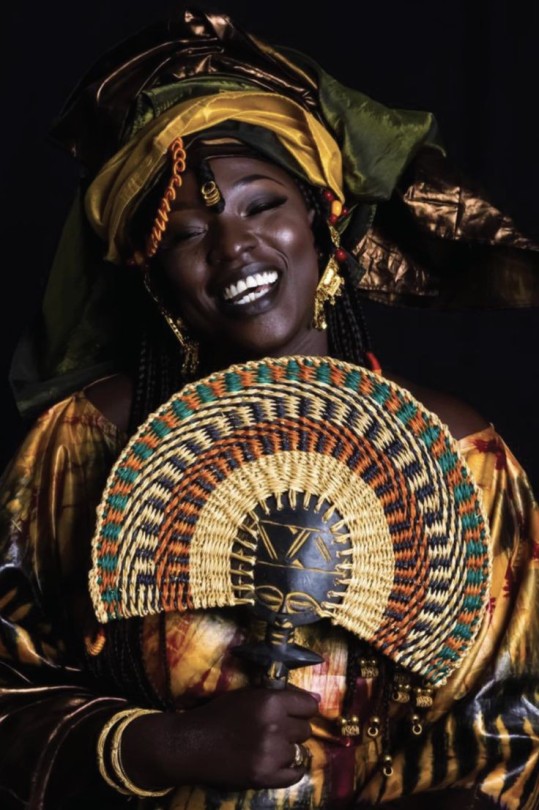
Within every culture, there is a hierarchy. Hierarchies are an important part of any culture, usually do ingrained that one within the culture wouldn't even question it. Hierarchy can be established either by age, gender or wealth and could even determine roles within their society. Sometimes hierarchy can may be oppressive and rigid whilst other times, ranks can intermingle without trouble. You should consider how these different ranks interact with one another and whether there are any special gestures or acts of deference one must pay to those higher than them. For example, the Khasi people of Meghalaya (Northern India), are strictly matrillineal. Women run the households, inheritance runs through the female line, and the men of the culture typically defer to their mothers and wives. Here are a few questions to consider:
How is a leader determined within the culture as a whole and the family unit?
Is the culture matriarchal? Patriarchal? Or does gender even matter?
How would one recognise the different ranks?
How would one act around somebody higher ranking? How would somebody he expected to act around somebody lower ranking?
Can one move socially? If not, why? If so, how?
Traditions and Customs

Traditions are a staple in any culture. These can be gestures or living life a certain way or to the way a certain person should look. Traditions are a personal detail to culture, they are what make it important. Tradition can dictate how one should keep their home, run their family, take care of their appearance, act in public and even determine relationship. Tradition can also be a double edged sword. Traditions can also be restrictive and allow a culture to push away a former member if they do not adhere to them, eg Traditional expectations of chastity led to thousands of Irish women being imprisoned at the Magdelene Laundries. Customs could be anything from how one treats another, to how they greet someone.
How important is tradition?
What are some rituals your culture undertakes?
What are some traditional values in your world? Does it effect daily life?
Are there any traditions that determine one's status?
Values and Opinions
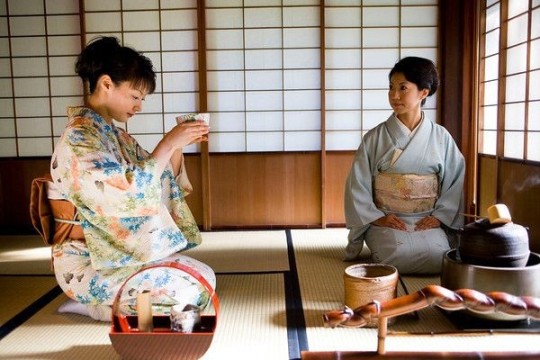
Values and Opinions are the bread and butter of any culture. This is the way your culture sees the world and how they approach different life hurdles. These may differ with other cultures and be considered odd to outsiders, what one culture may value another may not and what opinion another holds, one may not. There will be historical and traditional reasons to why these values and opinions are held. Cultures usually have a paragon to which they hold their members to, a list of characteristics that they expect one to if not adhere to then aspire to. The Yoruba people value honesty, hard work, courage and integrity. Here are some questions to consider?
How important are these ethics and core values? Could somebody be ostracised for not living up to them?
What are some morals that clash with other cultures?
What does your culture precieved to be right? Or wrong?
What are some opinions that are considered to be taboo in your culture? Why?
Dress Code
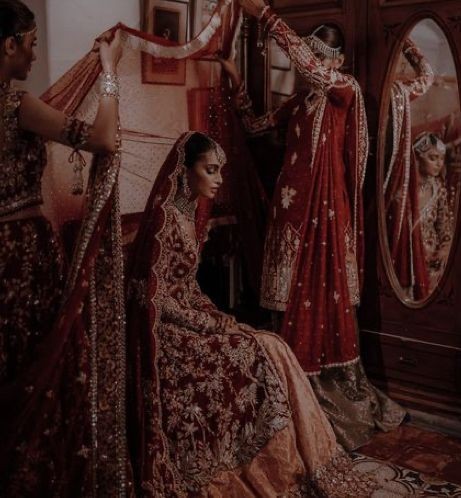
For many cultures, the way somebody dresses can be important. History and ethics can effect how one is meant to be dressed such as an expectation of chastity, can impose strict modesty. While other cultures, put more importance on details, the different sorts of clothes worn and when or what colour one might wear. The Palestinian people (من النهر إلى البحر ، قد يكونون أحرارا) denoted different family ties, marriage status and wealth by the embroidery and detailing on their thoub.
Are there traditional clothes for your world? Are they something somebody wears on a daily basis or just on occasion?
Are there any rules around what people can wear?
What would be considered formal dress? Casual dress?
What would happen if somebody wore the wrong clothes to an event?
Language

Language can also be ingrained as part of a Culture. It can be a specific way one speaks or a an entirely different language. For example, in the Southern States of America, one can engage in a sort of double talk, saying something that sounds sweet whilst delivering something pointed. Bless their heart. I have a post on creating your own language here.
Arts, Music and Craft

Many cultures are known for different styles of dance, their artwork and crafts. Art is a great part of culture, a way for people to express themselves and their culture in art form. Dance can be an integral part of culture, such as céilí dance in Ireland or the Polka in the Czech Republic. Handicrafts could also be important in culture, such as knitting in Scottish culture and Hebron glass in Palestine. Music is also close to culture, from traditional kinds of singing such as the White Voice in Ukraine and the playing of certain instruments such as the mvet.
Food and Diet
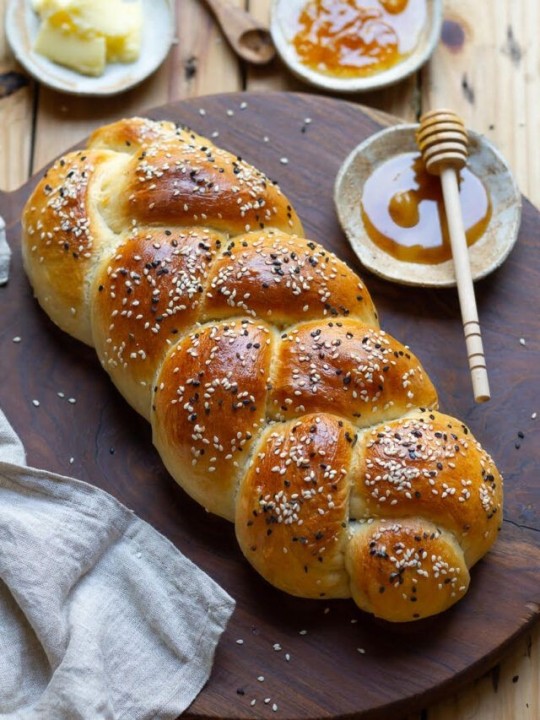
The way a culture prepares or intakes or treats certain foods are important to a culture. In some cultures, there is a diet yo adhere to, certain foods are completely banned. With Jewish culture, pork is prohibited along with fish such as sturgeon, along with shellfish and certain fowl. Meat must also be prepared in a certain way and animal byproducts such as dairy, must never be created or even eaten around this meat. This is known as kosher. The way one consumes food is also important to culture. In some cultures, only certain people may eat together. Some cultures place important on how food is eaten. In Nigerian culture, the oldest guests are served first usually the men before the women. In Japanese culture, one must say 'itadakimasu' (I recieve) before eating. Culture may also include fasting, periods of time one doesn't intake food for a specific reason.
What are some traditional dishes in your world?
What would be a basic diet for the common man?
What's considered a delicacy?
Is there a societal difference in diet? What are the factors that effect diet between classes?
Is there any influence from other cuisines? If not, why not? If so, to what extent?
What would a typical breakfast contain?
What meals are served during the day?
What's considered a comfort food or drink?
Are there any restrictions on who can eat what or when?
Are there any banned foods?
What stance does your world take on alcohol? Is it legal? Can anybody consume it?
Are there any dining customs? Are traditions?
Is there a difference in formal meals or casual meals? If so, what's involved?
Are there any gestures or actions unacceptable at the dinner table?
How are guests treated at meals? If they are given deference, how so?
#Fantasy Guide to Building A Culture#As promised#If I fail my German exam I'm blaming ye#Culture#Building a culture#Fantasy Guide#WorldBuilding#WorldBuilding guide#WorldBuilding help#Writing help#writing#writeblr#writing resources#writing reference#writing advice#ask answered questions#writers#writing advice writing resources#spilled ink#ask answered
11K notes
·
View notes
Text

Beginner's Guide to Tumblr
Choose an aesthetic!
℘ As you can see on my blog, I've chosen a brown and yellow/orange cafe vibe. Before that, it was a sunrise with an overflow of yellow, and before that, it was purple and pink cyberpunk.
℘ The great thing about Tumblr is how easily you can decorate your blog and make it truly yours to reflect your personality, so you can have a home to get all comfy in
℘ I recommend going on Pinterest or your favourite blogs for ideas. Choose a colour scheme (pastels, maroon, black and white, foresty green etc), a vibe (warm, exciting, dark, light, angelic, witchy etc)
℘ Play around with dividers which you can make on Canva, or other platforms -- there are many tutorials out there! You can also use other creators' but follow their rules (most will want to be credited via a tag or by reblogging their works, please be sure to respect their wishes) I use @/enchantings very often but these days I'm trying to make my own
℘ You can also use fun colours and different layouts for your post. Pick and choose the things you like to make your own but be sure you don't copy other people. If you like gradient text (like the one I use for my title), you can use stuffbydavid.com (@/screampied has a tutorial in their faq)
℘ If you want to have cute little symbols like these: ℘ ✧˚ ⋆。˚ (≖_≖ ) use cool symbols.top . Play around with it.
℘ Be original!
Make a Navigation post!
℘ This is important, even if you have no plans of posting your own creations, because it is a further reflection of who you are. If you want to have followers, you'll need a Navigation post for them to refer to. It's your blog's headquarters.
℘ A Navigation post is your pinned post and it contains preliminary information about yourself like your age, your rules for interaction, your masterlists, your faq etc. If you're a creator, tell people what it is you predominantly do, the way I've said I write for JJK mostly
℘ You can decorate it too, reasserting your aesthetic and the vibe you want to go for. Show off who you are and what you want people to know!
Tumblr rules!
℘ Always credit other people you take direct inspiration from
℘ If you don't like a post, scroll on. Sometimes things just aren't for you. And you can always filter tags you don't want to see or block the creator
℘ Don't argue with people in the comments, others have a right to express their thoughts, whether you agree or not, the same way you do
℘ Put your age in your bio. Especially if you interact with nsfw/18+ content. Most creators have rules and boundaries in place where they only want 18+ individuals to interact so for your safety and for their comfort, clearly outline your age please.
℘ When interacting with a creator i.e. through their messages or inbox (maybe to say thank you or to make a request) please read their rules first. This is imperative because you'll otherwise never know what their boundaries are but they are there for a reason. We all have to do what we have to do to ensure Tumblr is a safe space for us. Please respect that the way you'd want to be respected.
What, other than writings and art, can I put on my blog?
℘ You can reblog other people's works with your own comments and thoughts! Contribute to threads and conversations. Reblogs are always appreciated for creators too because it gets their work out there further
℘ You don't have to write fanfiction, you can also post food/restaurant reviews, pop culture news, memes etc.
℘ Just ramble about your interests, the world is your oyster!

213 notes
·
View notes
Text
as much as the kink part of being florted is hot, it will never compare to the sheer fantasy of being taken care of without expectations. i keep fantasizing about it, the idea of being cared for and loved despite my disorders. that world where i can be taken in and helped, to have my owner wash me and cuddle me after, the absolute sensation that i will never have to worry about being abandoned again echoing in her biorythm. to finally feel safe enough to be weak, to be vulnerable and know that it wont get me hurt, to bare my soul to someone with the awareness that they will love what lies within.
to me being owned just means being loved for the simple reason of existing
#hdg#human domestication guide#floretposting#floret#flort#affini#mild vent#the bpd doesn't help#at all#if an affini could just fix my brain I'd be so thankful
2K notes
·
View notes
Text
Character Flaws and Their Meanings
Impulsiveness : Acts on instinct without careful planning. Perfectionism : Sets unrealistically high standards, leading to self-criticism. Indecisiveness : Struggles to commit to decisions or choose a path. Arrogance : Overestimates one’s abilities and dismisses others. Pessimism : Habitually expects negative outcomes in most situations. Cynicism : Distrusts the motives and sincerity of others. Overconfidence : Places excessive faith in one’s skills, often underestimating risks. Stubbornness : Resists change and refuses to adapt to new ideas. Jealousy : Feels envious of others' success or possessions. Insecurity : Experiences frequent self-doubt and a lack of confidence. Procrastination : Tends to delay tasks, often leading to missed opportunities. Passivity : Avoids taking initiative and relies on others to act. Aggressiveness : Responds with hostility or force rather than reason. Selfishness : Prioritizes personal gain over the welfare of others. Fragility : Is overly sensitive to criticism and easily discouraged. Egotism : Constantly focuses on oneself and one’s own importance. Defensiveness : Quickly rejects or rationalizes away critique or new information. Manipulativeness : Exploits others to fulfill personal needs or desires. Recklessness : Shows a careless disregard for potential risks or consequences. Resentfulness : Holds lingering bitterness and grudges over perceived wrongs. Distractibility : Finds it hard to maintain focus amid competing interests. Impatience : Lacks the willingness to wait, often spoiling opportunities to learn. Perfunctory : Performs actions in a mechanical, uninspired manner. Self-Doubt : Consistently questions personal abilities and decisions. Arbitraryness : Makes decisions based on whim rather than reason or evidence. Rigidity : Is inflexible and unwilling to consider alternative viewpoints. Gullibility : Trusts too easily, often leading to being misled or deceived. Obsession : Becomes excessively fixated on particular ideas or details. Aloofness : Maintains emotional distance, appearing detached or indifferent. Intolerance : Refuses to accept differing perspectives or lifestyles.
Writing Advice for Brainstorming
Mix genres and time periods: Experiment by combining elements from different eras or genres to create unique settings and narratives.
Use "what if" scenarios: Pose unexpected questions (e.g., What if time travel operated on emotions rather than mechanics?) to spark novel ideas.
Draw from diverse mediums: Engage with art, music, or even scientific papers to inspire unexpected plot twists.
Embrace absurdity: Let illogical or surreal ideas guide you; sometimes the wildest thoughts lead to compelling stories.
Reverse clichés: Identify common tropes in your favorite genres and deliberately invert them to create fresh perspectives.
Incorporate personal anomalies: Transform your idiosyncrasies and personal struggles into rich, multi-dimensional characters.
Use mind-mapping: Visually plot your ideas in a freeform way to uncover hidden connections between disparate elements.
#writing#writeblr#on writing#writing tips#how to write#writers block#creative writing#writers and poets#thewriteadviceforwriters#writers on tumblr#writing project#fiction writing#novel writing#writing a book#writing advice#romance writing#writing characters#writing community#writing guide#writing inspiration#writing prompts#writing ideas#writing reference#writing blog#writing resources#writing help#writing software#writerscommunity#writers#writing tips and tricks
9K notes
·
View notes
Text
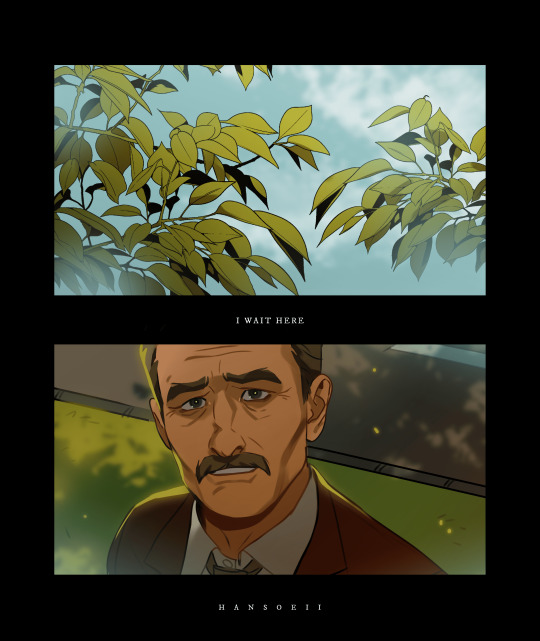
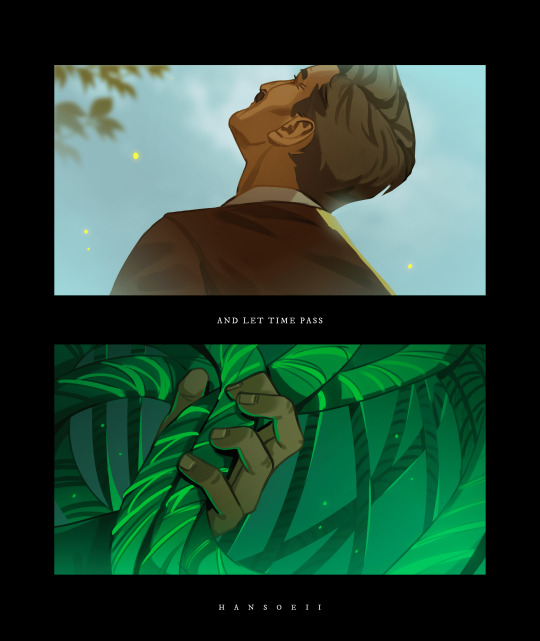


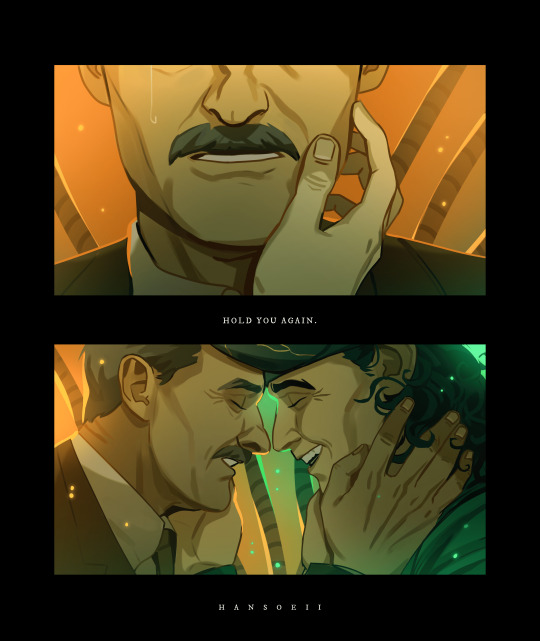

let time pass.
#and the tears come streaming down your face#when you lose something you can't replace#when you love someone but it goes to waste#could it be worse?#Light will guide you home and ignite your bones#and I will try to fix you#thank you tom hiddleston for making fix you the lokius anthem#I'm still in mourning over the loki finale and I had to make something to make myself feel a little better#I hope this can help you a little too#or make it worse#haha#wanted to try something new#loki#lokius#lokius fanart#loki fanart#loki and mobius#loki season 2#loki season 2 fanart#loki mobius#loki laufeyson#loki god of stories#mobius m. mobius#owen wilson#tom hiddleston#my art#fanart#digital art#lokius comic#loki comic
12K notes
·
View notes
Note
Hello! I love your art. I just have one question. How do you draw drones?


idk tbh i just wing it
1K notes
·
View notes
Text
How To Become A Brand New Person ✨✨
Self Reflect:
Journal daily.
Think about past decisions and how they impacted your life.
Meditate regularly.
Create a vision board to visualize your goals.
Review your strengths and weaknesses.
Identify your core values and beliefs.
Figure out your passions and interests.
Think about your childhood dreams and aspirations.
Evaluate your current state of happiness and fulfillment.
Set Clear Goals:
Define specific career goals, like "Get promoted within two years."
Set health goals, like "Lose 20 pounds in six months."
Create financial goals such as "Save $10,000 for a vacation."
Establish personal development goals, like "Read 24 books in a year."
Set relationship goals, such as "Improve communication with my partner."
Define education goals, like "Complete a master's degree in three years."
Set travel goals, like "Visit five new countries in the next two years."
Create hobbies and interests goals, such as "Learn to play a musical instrument."
Set community or volunteer goals, like "Volunteer 100 hours this year."
Establish mindfulness or self-care goals, such as "Practice meditation daily."
Self Care:
Exercise for at least 30 minutes a day.
Follow a balanced diet with plenty of fruits and vegetables.
Prioritize getting 7-9 hours of quality sleep each night.
Practice in relaxation techniques like deep breathing or yoga.
Take regular breaks at work to avoid burnout.
Schedule "me time" for activities you enjoy.
Limit exposure to stressors and toxic people.
Practice regular skincare and grooming routines.
Seek regular medical check-ups and screenings.
Stay hydrated by drinking enough water daily.
Personal Development:
Read a book every month from various genres.
Attend workshops or seminars on topics of interest.
Learn a new language or musical instrument.
Take online courses to acquire new skills.
Set aside time for daily reflection and self improvement.
Seek a mentor in your field for guidance.
Attend conferences and networking events.
Start a side project or hobby to expand your abilities.
Practice public speaking or communication skills.
Do creative activities like painting, writing, or photography.
Create a Support System:
Build a close knit group of friends who uplift and inspire you.
Join clubs or organizations aligned with your interests.
Connect with a mentor or life coach.
Attend family gatherings to maintain bonds.
Be open and honest in your communication with loved ones.
Seek advice from trusted colleagues or supervisors.
Attend support groups for specific challenges (e.g., addiction recovery).
Cultivate online connections through social media.
Find a therapist or counselor for emotional support.
Participate in community or volunteer activities to meet like minded people.
Change Habits:
Cut back on sugary or processed foods.
Reduce screen time and increase physical activity.
Practice gratitude by keeping a daily journal.
Manage stress through mindfulness meditation.
Limit procrastination by setting specific deadlines.
Reduce negative self-talk by practicing self-compassion.
Establish a regular exercise routine.
Create a budget and stick to it.
Develop a morning and evening routine for consistency.
Overcome Fear and Self Doubt:
Face a specific fear head-on (example: public speaking).
Challenge your negative thoughts with positive affirmations.
Seek therapy to address underlying fears or traumas.
Take small, calculated risks to build confidence.
Visualize success in challenging situations.
Surround yourself with supportive and encouraging people.
Journal about your fears and doubts to gain clarity.
Celebrate your accomplishments, no matter how small.
Focus on your strengths and accomplishments.
Embrace failure as a valuable learning experience.
Embrace Change:
Relocate to a new city or country.
Switch careers or industries to pursue your passion.
Take on leadership roles in your workplace.
Volunteer for projects outside your comfort zone.
Embrace new technologies and digital tools.
Travel to unfamiliar destinations.
Start a new hobby or creative endeavor.
Change your daily routine to add variety.
Adjust your mindset to see change as an opportunity.
Seek out diverse perspectives and viewpoints.
Practice Gratitude:
Write down three things you're grateful for each day.
Express gratitude to loved ones regularly.
Create a gratitude jar and add notes of appreciation.
Reflect on the positive aspects of challenging situations.
Show gratitude by volunteering or helping others in need.
Send thank-you notes or messages to people who've helped you.
Keep a gratitude journal and review it regularly.
Share your gratitude openly during family meals or gatherings.
Focus on the present moment and appreciate the little things.
Practice gratitude even in times of adversity.
Be Patient:
Set realistic expectations for your progress.
Accept that personal growth takes time.
Focus on the journey rather than the destination.
Learn from setbacks and view them as opportunities to improve.
Celebrate small milestones along the way.
Practice self-compassion during challenging times.
Stay committed to your goals, even when progress is slow.
Keep a journal to track your personal growth.
Recognize that patience is a valuable skill in personal transformation.
Celebrate Small Wins:
Treat yourself to your favorite meal or dessert.
Reward yourself with a spa day or self-care activity.
Share your achievements with friends and loved ones.
Create a vision board to visualize your successes.
Acknowledge and congratulate yourself in a journal.
Give yourself permission to take a break and relax.
Display reminders of your accomplishments in your workspace.
Take a day off to celebrate a major milestone.
Host a small gathering to mark your achievements.
Set aside time to reflect on how far you've come.
Maintain Balance:
Set clear boundaries in your personal and work life.
Prioritize self care activities in your daily routine.
Schedule regular breaks and downtime.
Learn to say "no" when necessary to avoid overcommitment.
Evaluate your work life balance regularly.
Seek support from friends and family to avoid burnout.
Be kind to yourself and accept imperfections.
Practice mindfulness to stay present and grounded.
Revisit your priorities and adjust them as needed.
Embrace self love and self acceptance as part of your daily life.
#personal improvement#personal development#personal growth#self help#self awareness#self reflection#self improvement#level up journey#self love journey#dream girl guide#dream girl journey#dream girl tips#becoming that girl#that girl#it girl#glow up tips#glow up#clean girl#pink pilates girl#divine feminine#femininity#femme fatale#feminine journey
7K notes
·
View notes